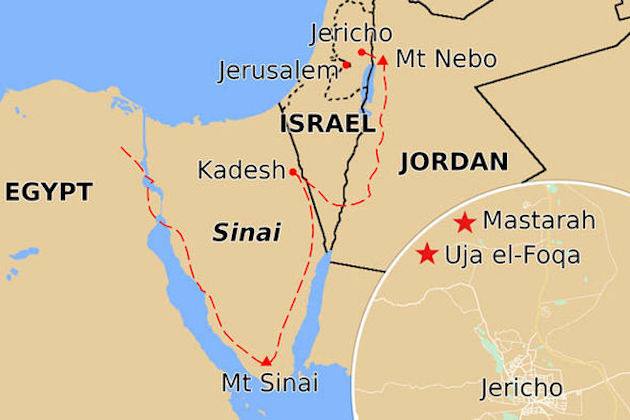For years, some archaeologists have doubted the biblical story of the nation of Israel’s origin because the account lacked material evidence—until now.
Historical evidence for the biblical account of the Exodus is most likely located at a site near the Jordan River, according to a recently announced discovery.
Instead of how Exodus and Joshua describe the Israelites escaping Egypt, crossing the Jordan River, and conquering the land, some contend they were already part of an indigenous population in Canaan.
However, at the Jordan Valley site of Khirbet el-Mastarah, archaeologists Ralph K. Hawkins and David Ben-Shlomo have made a stunning announcement: there is evidence of ruins from a nomadic people believed to be the Hebrews coming from Egypt.
Ben-Shlomo said in comments quoted by the UK Daily Express that the ruins offer the first evidence for the biblical account.
Excavations in Khirbet el-Mastarah, an area in the Jordan Valley area of Samaria, have unearthed numerous nomadic or semi-nomadic enclosures and structures dating back to the time of the Exodus, according to an article in Biblical Archaeology Review from Ralph Hawkins and David Ben-Shlomo.
“If they are, this would fit the biblical story of the Israelites coming from east of the Jordan River, then crossing the Jordan and entering the hill country of Israel later,” stated Ben-Shlomo, an archaeologist from Ariel University and excavation co-director.
READ ABOUT OUR EXPERIENCE TAKING OUR FAMILY TO ISRAEL
Shlomo said the location, isolated and hidden by surrounding hills, makes it a likely place a nomadic people would settle. The evidence also points to a “new population” entering the area.
All of this supports the biblical account of the Israelites wandering in the desert for decades before entering the land.
Hawkins and Ben-Shlomo say the alternate theory of the Israelites that contends they were already living in Canaan is based in part because archaeologists had not found any evidence for early Israelites in the east, particularly the Jordan Valley, during the Iron Age, according to Bible History Daily.
Their discoveries, however, reveal stone enclosures to house animals and pottery shards in the area, indicative of a traveling group of people settling in this area for a short time.
“By the end of our 2017 season, we were struck by the fascinating picture that had begun to emerge in the Jordan Valley, a region that up until recently has been virtually unknown archaeologically,” write Hawkins and Ben-Shlomo in Biblical Archaeology Review.
“Within a range of just a couple of miles, we may be able to see the evolution of early Israel from a domestic-scale culture to a political-scale culture.”
The Exodus story is spread over the biblical books of Exodus, Leviticus, Numbers and Deuteronomy.
It begins with the Israelites enslaved in Egypt, before the Pharaoh – coerced by 10 terrible plagues – agrees to release them and Moses leads them across the miraculously-parted Red Sea.
Once they reached the Sinai Peninsula, scripture says they travelled to Mount Sinai, where Moses received the 10 commandments.
They then headed to the southern border of Canaan, but being too scared to enter, were condemned to 38 years in the wilderness by god.
After passing the years at the oasis of Kadesh Barnea, the Israelites then travelled to the eastern border of Canaan, where Moses died and was buried on Mount Nebo.
In the subsequent Book of Joshua, Joshua takes over leadership of the Israelites, leading them into the promised land across the River Jordan and conquering Jericho.
Jericho is a bustling city today and considered the oldest continuously inhabited city in the world.










